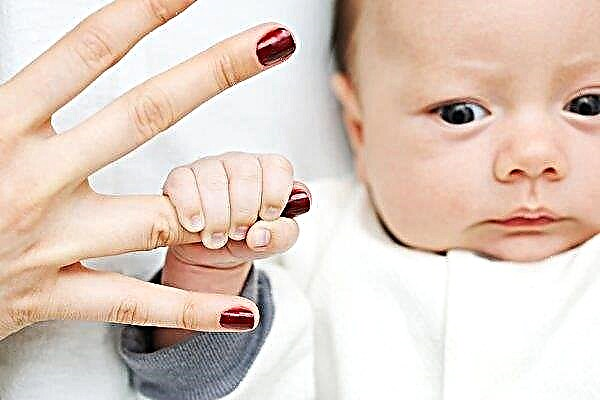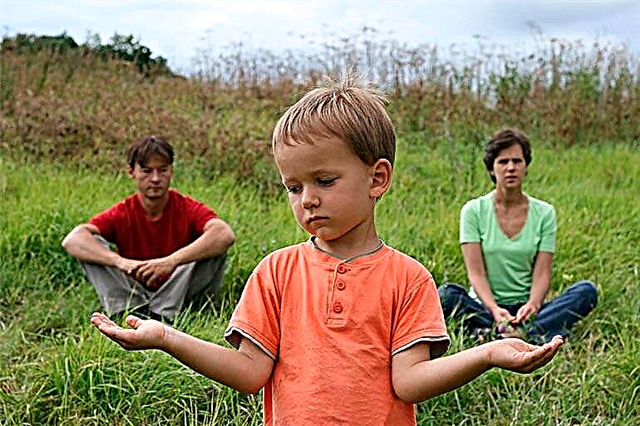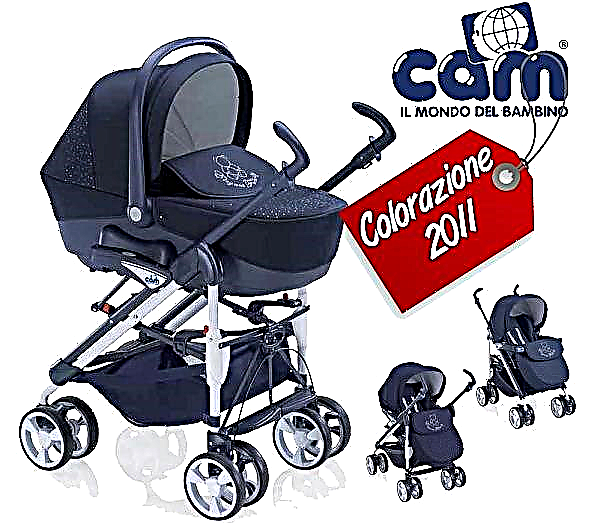Apnea is understood as an involuntary cessation of breathing associated with internal causes of the body. The syndrome is characterized by dangerous symptoms and requires urgent help, since the disease most often occurs during sleep, when a person cannot control himself or the processes of the respiratory system. Apnea in newborns can occur in infancy, immediately after birth, and in some cases develops in a child years later.

Premature babies are more prone to sleep apnea
What is apnea syndrome
What is apnea in newborns - respiratory arrest for more than 20 seconds, or 10 seconds with concomitant bradycardia. This period of time is enough for the baby to develop hypoxia, which causes brain damage.
Apnea in premature infants is the most common symptom, as they have an underdeveloped respiratory system and respiratory regulation center. Seizures begin to pass closer to 40-45 weeks of a baby's life, as his nervous system matures.
Important! If the syndrome has happened, you should not diagnose and treat at home. All the necessary manipulations must be carried out by a specialist and the necessary measures must be prescribed for the subsequent improvement of the condition.
Children who are over a year old experience respiratory arrest during sleep due to airway obstruction: this is either a pathology or a congenital disorder. Here it is necessary to monitor and eliminate probable causes.
In the risk zone, babies with birth injuries, born prematurely and with disorders of the central nervous system.
Kinds
Interrupted breathing in a newborn is especially frightening for parents, since it is possible not to notice that the child has an attack. Despite the fact that during the night at first the mother wakes up several times to feed the crumbs, she may not have time to provide first aid for apnea.
The following types are distinguished:
- Central. In this case, the activity of the main respiratory center is disrupted. At the time of the syndrome, the muscles do not receive an impulse that stimulates their motor activity. Often this type occurs in children who have experienced birth trauma.

Birth trauma to a baby
- Obstructive. This type happens when the respiratory tract is obstructed, the air flows unevenly, which is why the baby's chest moves in a characteristic attack manner. Apnea is most common in children with cleft lip.

Baby hare lip
- Mixed. It starts with a central one, then the attack becomes obstructive. This is one of the most difficult categories to diagnose and treat.
note! Obstructive seizures are most common in children aged 2-8 years.
Causes of pathology
Respiratory arrest in newborns occurs under various circumstances.
Causes of obstructive apnea in premature newborns:
- Abnormally enlarged tongue, or macroglossia.
- The larynx muscle contracts involuntarily - laryngospasm.
- The growth of cartilage and bones is slowed down - achondroplasia.
- Paralysis or injury to the posterior laryngeal muscle.
- The tonsils are enlarged.
- Obesity of a child or adult.
- Congenital underdevelopment of the tongue.

Overweight baby
If this is a central view, then the reasons are as follows:
- Premature birth - prematurity.
- Injuries to the brain and spinal cord during childbirth.
- Low blood glucose.
- Disorders of gas exchange in the alveoli.
- Epilepsy.
- Viral or bacteriological infections.
- Anemia.
- Arrhythmia.
- Sepsis.

Neonatal sepsis
Additional Information. The diagnosis of breath holding in newborns of the idiopathic type is very rare, if the cause of the syndrome cannot be identified.
Causes of the mixed type of apnea:
- Pathological heart diseases.
- Hypothermia or overheating of the body.
- Lack of calcium or glucose.
- The consequences of the mother's use of alcohol or drugs during pregnancy.
Symptoms
What is a nighttime apnea attack in infants is the body's reaction against the background of general muscle relaxation. Usually, the child wakes up immediately, because he feels short-term hypoxia. He is very frightened, so there is an adrenaline rush, which, in turn, negatively affects rest and the nervous system.
What are the characteristic symptoms:
- heavy snoring;
- breathing is absent for 10 or more seconds;
- the baby breathes through the mouth;
- profuse sweating;

Sweating babies during sleep
- restless sleep;
- headache during the day;
- reduced dynamics of development.
As a result, the baby is constantly not getting enough sleep, moodiness and irritability develop. In the future, the child's appetite, weight and activity decrease.
note! Breath-holding attacks often manifest themselves during the REM sleep phase, therefore, they may not be noticed. In this case, it is worth monitoring the child's behavior during the day and snoring at night.
Complications of apnea:
- child hyperactivity and attention deficit;
- hypertensive crises;
- arrhythmia attacks;
- pathologies of the heart, especially often ischemic disease, heart failure, against their background - heart attack and stroke.
First aid for an attack of apnea
If the syndrome continues for a long time, it can lead to asphyxiation of the child, which threatens his life. In this situation, parents must act quickly and smoothly.
An ambulance is urgently called if:
- the child's legs and arms, nose and border of lips turned blue (in medicine, this characteristic is called cyanosis);
- pulse less than 90 beats per minute;
- limbs hang down involuntarily.
Cyanosis is evidence that the body lacks oxygen. First, you should try to touch the child with your finger on the back, touch the earlobes, massage the arms, legs, chest. If all the manipulations do not bring favorable results, then artificial respiration is started.
Step-by-step instruction:
- Lay the child on a horizontal flat surface.
- The airways are checked, if the tongue is fused, then raise the chin and take the head back.
- The lips are wrapped around the nose and mouth.
- A breath is taken, and 2 smooth blows are made, which last no more than 2 seconds.
- If there are no movements in the chest, then points 2-4 are performed again, but it is worth changing the position of the head.
- If the chest moves, the pulse is felt, then everything is being done correctly.
- If there is a pulse, then the manipulation continues.
If there is no pulse, then they begin to massage the heart. The index and middle fingers are applied to the middle of the chest, just below the nipple line, a sharp press is made 5 times within 3 seconds. At the same time, the chest should bend by 1.5-2 cm. After alternating 1 blowing - 5 pressings.

Newborn heart massage
A set of measures is carried out until the arrival of an ambulance, after which the child needs to be hospitalized.
Prevention of breathing disorders in a baby
First of all, the expectant mother should exclude the use of drugs, alcohol and smoking tobacco products during pregnancy. All medications should be used only as directed by a doctor and in exceptional cases. Mom's nutrition is also important: it should be balanced, with an abundance of vitamins and microelements. Do not forget about emotional health: avoid stress and nervous overload.
If a child is diagnosed with apnea syndrome, you should:
- Control his weight;
- Timely treat the respiratory system, endocrine and neurological disorders, allergic manifestations;
- Do not eat heavy food 3 hours before bedtime;
- Prepare an optimal place to sleep, the mattress should be semi-rigid;
- The child's sleep is on the side, try to keep the head and spine at the same level as much as possible;
- Air humidity in the children's room - 50-60%;
- Create optimal conditions for physical activity with a predominance of aerobic loads: cycling, sports games, swimming, walking a lot in the fresh air.
If apnea develops actively, and the child is not given the necessary treatment, there is a high risk of the growth of additional symptoms that lead to disability in adulthood.
With proper and timely treatment, apnea in babies will begin to pass quickly enough, provided that all the recommendations of specialists are followed and first aid is provided. The consequences of incorrect actions can lead to a threat to the baby's life and death.



